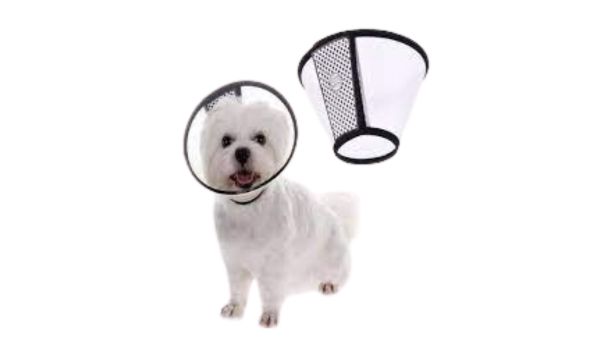How to put an e-collar on a dog? How to put an e-collar on a dog? How to put an e-collar on a dog? How to put an e-collar on a dog? How to put an e-collar on a dog? How to put an e-collar on a dog? v How to put an e-collar on a dog?
Putting an e-collar on your dog can be daunting, especially if it’s your first time. However, it’s important to use it correctly to avoid causing harm to your furry friend.
In this article, we’ll provide a detailed guide on how to put an e-collar on your dog, ensuring that it fits properly and is used safely.
What is an E-Collar?

E-collars, also known as electronic collars or shock collars, are devices used for dog training. They are designed to deliver an electrical shock to the dog’s neck when activated by a remote control or an automatic trigger, such as a barking sensor.
E-collars have different intensity levels, ranging from a mild vibration or beep to a more powerful shock. They are used to correct unwanted behaviors, such as excessive barking, aggression, or running away, and to reinforce positive behaviors, such as obedience and recall.
While e-collars can be effective when used properly, their use has also been controversial among dog trainers and animal welfare advocates.
How to Put an E-Collar on a Dog: A Step-by-Step Guide:

Step 1: Choose the Right Size
Before putting an e-collar on your dog, choose the right size. It should fit snugly around your dog’s neck but not too tight to avoid causing discomfort. To determine the right size, measure your dog’s neck and add 2-3 inches to the measurement.
Step 2: Prepare the Collar
Next, remove any packaging or tags from the e-collar and ensure it’s fully charged if it’s rechargeable. Check the manual for any specific instructions on how to charge it.
Step 3: Place the Collar Around Your Dog’s Neck
Place the collar around your dog’s neck, ensuring it’s not too tight or loose. The collar should fit snugly, but you should be able to fit two fingers between the collar and your dog’s neck. Adjust the collar accordingly.
Step 4: Secure the Collar
Once the collar is in the right position, secure it by fastening the buckle or clip. Ensure it’s not too tight that it restricts your dog’s breathing or movement and not too loose that it falls off.
Step 5: Test the Collar
After securing the collar, test it by turning it on and checking that it’s functioning correctly. You can do this by using the remote or tapping the collar. If it’s not working, check the manual for troubleshooting tips.
Step 6: Use the Collar Safely
Finally, it’s important to use the e-collar safely. Follow the instructions in the manual on how to use it properly, and avoid leaving it on your dog for extended periods. Always supervise your dog when they are wearing the collar, and never use it as a punishment tool.
Why Do Dogs Need Elizabethan Collars?
Dogs may need Elizabethan collars, also known as E-collars or cone collars, to prevent them from licking, scratching, or biting at an injury or a surgical site.
These collars are typically made of plastic and shaped like a cone, with a hole at the bottom to allow the dog to eat and drink. They are designed to restrict the dog’s access to the affected area and to prevent them from further injuring themselves or removing any stitches or bandages.
Elizabethan collars may also prevent dogs from ingesting harmful substances or foreign objects, such as rocks or toys, or from excessively grooming themselves after a flea or tick treatment.
In addition, E-collars can be useful in preventing dogs from causing damage to household items, such as furniture or walls, due to anxiety or other behavioral issues.
While wearing an Elizabethan collar can be uncomfortable for dogs, it is often necessary for their safety and well-being. With proper care and attention, most dogs can adjust to wearing a cone collar and can be kept safe during the recovery process.
Where should an e-collar sit on a dog’s neck?

An e-collar, an electronic or shock collar, should sit snugly on a dog’s neck, just behind the ears. It is important to position the collar high enough on the neck to ensure that the contact points, which deliver the electric stimulation, are in contact with the skin and not covered by the dog’s fur.
When fitting an e-collar, ensure it is not too tight or loose. You should be able to fit two fingers between the collar and the dog’s neck, and the collar should not be so tight that it restricts the dog’s breathing or movement or causes discomfort.
It is important to note that an e-collar should only be used under the guidance of a professional dog trainer or veterinarian. Using an e-collar improperly can cause physical and emotional harm to the dog and can harm its training and behavior.
Always follow the instructions and safety guidelines provided by the manufacturer and seek professional advice if you are unsure how to use the collar safely and effectively.
How long can a dog wear the e-collar?
The time a dog can wear an e-collar, an electronic or shock collar, depends on the manufacturer’s specific instructions and the dog’s comfort and well-being. Most e-collars are designed to be worn for short periods, typically no longer than 12 hours per day, to prevent discomfort or irritation to the dog’s skin.
It is important to monitor your dog closely while wearing an e-collar and to check their skin regularly for signs of irritation, such as redness or swelling. Remove the collar immediately and seek veterinary advice if you notice any discomfort or irritation.
The length of time a dog may need to wear an e-collar can vary depending on the reason for its use. For example, a dog recovering from surgery may need to wear an e-collar for a few days to a few weeks until the wound has healed, while a dog undergoing behavior training may only need to wear the collar during training sessions.
How tight should a shock collar be?

A shock collar, an electronic or e-collar, should fit snugly around the dog’s neck but not be too tight. It is important to ensure that the contact points, which deliver the electric stimulation, are in contact with the dog’s skin and not covered by the dog’s fur.
When fitting a shock collar, you should be able to fit two fingers between the collar and the dog’s neck. The collar should be snug enough not to slide around the dog’s neck or be easily removed but loose enough to allow for comfortable breathing and movement.
It is important to note that shock collars should only be used under a professional dog trainer or veterinarian’s guidance and should never be used as a punishment or for long-term behavior modification.
Shock collars can cause physical and emotional harm to dogs when used improperly or excessively. Always follow the instructions and safety guidelines provided by the manufacturer and seek professional advice if you are unsure how to use the collar safely and effectively.
Pros and cons of e-collars:
Here are some pros and cons of e-collars (also known as electronic collars or shock collars) for dogs:
Pros:
- Effective in stopping unwanted behavior, such as excessive barking, digging, or jumping.
- It can provide a quick and immediate correction, making it easier for the dog to understand undesirable behavior.
- It can train dogs at a distance, allowing for off-leash training and recall.
- Some e-collars have multiple levels of stimulation, allowing for customized and gradual training.
- It can be useful for dogs with certain behavior problems, such as aggression or chasing.
Cons:
- Controversial and potentially harmful if used improperly or excessively.
- It can cause physical and emotional harm to dogs, including pain, fear, and anxiety.
- This can lead to negative associations with training, causing the dog to become fearful or avoidant.
- It cannot be easy to use correctly, requiring proper training and guidance from a professional.
- It may not be effective for all dogs or all behavior problems.
- It can be expensive, with some models costing hundreds of dollars.
Precutation about using e-collars:
Here are some precautions to consider when using e-collars on dogs:
- Always follow the instructions and safety guidelines provided by the manufacturer.
- Use an e-collar only under the guidance of a professional dog trainer or veterinarian.
- Do not use an e-collar as a punishment or for long-term behavior modification.
- Check the collar regularly for signs of wear or damage, and replace it if necessary.
- Ensure that the collar is fitted correctly and snugly, but not too tight, to prevent discomfort or injury to the dog.
- Monitor the dog closely while wearing the collar, and check their skin regularly for signs of irritation or injury.
- Use the lowest possible stimulation level necessary to achieve the desired behavior, and avoid using the collar excessively or for prolonged periods.
- Never leave an e-collar on an unsupervised dog; it can become caught on objects or cause injury.
- Consider alternative training methods, such as positive reinforcement or clicker training, before using an e-collar.
- Be aware of the potential risks and controversies surrounding e-collars, and make an informed decision based on your dog’s needs and behavior.
Conclusion
e-collars (also known as electronic collars or shock collars) can be a useful tool in training dogs and correcting certain unwanted behaviors. However, their use should be cautiously approached only under the guidance of a professional dog trainer or veterinarian.
E-collars have potential risks and controversies surrounding their use, and there are alternative training methods that should be considered before resorting to the use of an e-collar. Proper training, guidance, and consideration of a dog’s needs and behavior are crucial when using e-collars to ensure they are used safely and effectively.




